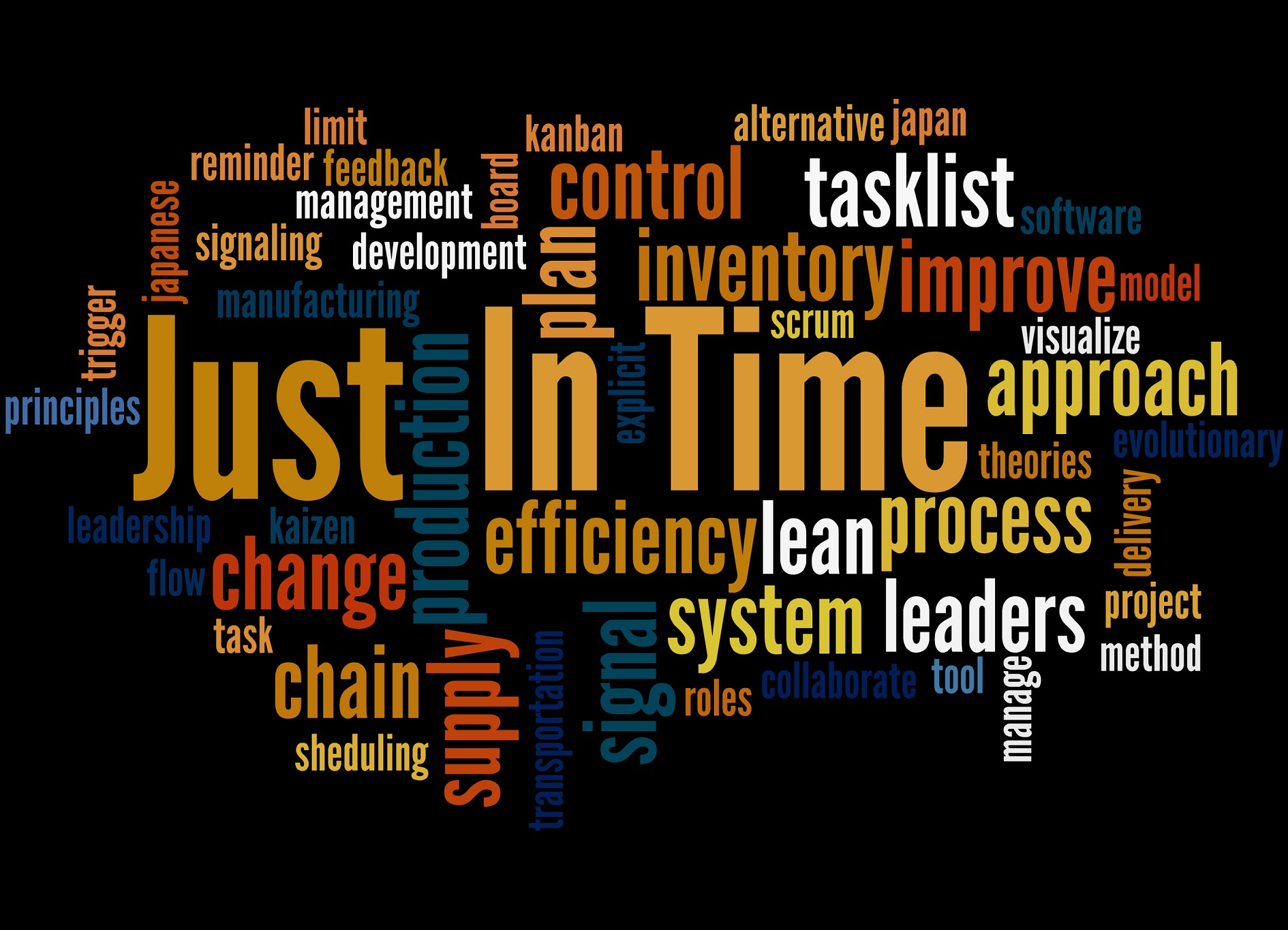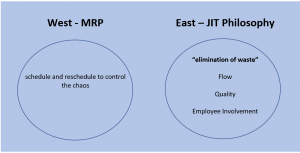
08 Mar Let us refresh our Japanese scheduling skills
Reading time: 2 min
Keywords: Just In Time, lean manufacturing, eliminating waste
Authors: Andreas Kasapleris
In this post, I will try to remind us all, the manufacturing practices which led Japan to become a World Class Manufacturer (WCM).
The springboard for Japan’s success as a WCM was “Just In Time”. The term has been made known in the early 1980s by Western manufacturers and it represented the western perception of Toyota’s Production System which began sometime after World War II. Until the late 1970s, this “system” was limited only to Toyota and to Toyota’s key suppliers.
There are still management personnel today, who are not familiar with or misunderstand the term and what “Just In Time” is all about.
Let me first clarify what JIT is NOT? There are two things JIT is not!
- Not a technique, i.e. Kanban. Many executives today believe JIT is Kanban, well, it is not!.
- Not software. JIT is using software but is not the software itself.
Now, let me state what JIT is all about in a very comprehensive sentence.
“Just In Time is a manufacturing philosophy of eliminating waste in the total manufacturing process, from purchasing to distribution”.
And this is how the term was best expressed in the early 1980s. Nowadays, this “philosophy” is for the manufacturing community more commonly heard or expressed as “lean manufacturing”.One could say that the latest term, “lean manufacturing” is fully aligned with the term that was used back in the 1980s, that of “eliminating waste”.
And then comes the obvious question, what do we mean by saying “eliminating waste” in the manufacturing process? Let us address the issue with an example.
Consider the following case. A company manufactures product A for one of its clients. The cost of this product is made up of 5€ for purchased materials and an additional cost of 5€ which adds to the manufacturing process. Assume that all of the added cost adds value, although, in reality, it may not be. The lead time for this product is 2 weeks. That means that the company takes 5€ of materials and over 2 weeks adds 5€ of value. The company works 2 shifts. That means the item is in-house for 160 hours – 40hours per week, times 2 shifts per week (80 hours), times 2 weeks (160 hours). Assume that the hourly wage of manufacturing workers at the company averages about 8€ per hour. That means the value-added 5€ represents less than 40 minutes of paid labor. JIT asks the question: “Why does it require running the manufacturing facility for 160 hours in order to add the equivalent of 40 minutes of labor?”.Forty minutes is less than one-half of one percent of the total time the item is in the company’s manufacturing process. See now the point JIT brings?
JIT philosophy is about eliminating the non-value-adding steps in the manufacturing chain so that a far larger portion of manufacturing processes is spent on tasks that actually add value. In that sense, the term “lean manufacturing” is in full alignment with the “elimination of waste”.Implementation of JIT has been different between the Japanese and Western manufacturing companies even among Japanese companies.
While we as westerners have mostly used the MRP philosophy in our production to manage the “chaos”, Japan used the“other approach”, JIT.

In the upcoming posts, we will be presenting cases using state-of-the-art software which can help us improve efficiency in our factories.
There is a lot more to be discussed, so stay tuned!



